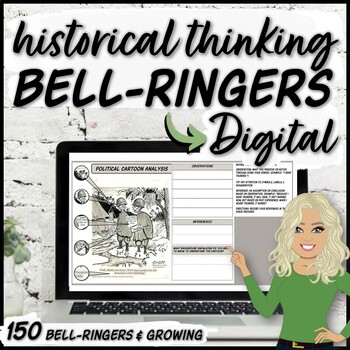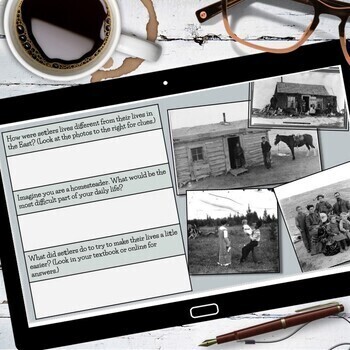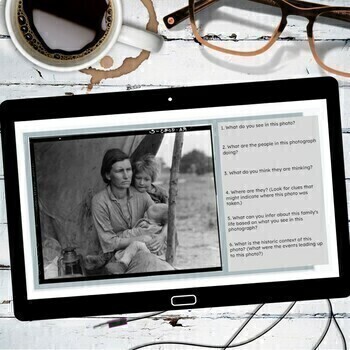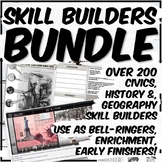U.S. History 2nd Half Skills-Based | Bell Ringers | Practice | Enrichment
- Google Slides™

What educators are saying
Also included in
- New teachers! This "Back to School" bundle includes everything you need to get you through the first week of school and years to come! I've included my most popular bulletin boards, activities, syllabus templates, "Meet the Teacher" forms and my best-selling TED Talk lesson in this bundle! This bundPrice $14.00Original Price $37.63Save $23.63
- Engage your middle and high school Social Studies students with this Bell Ringer Resource! This resource features over 200 short activities perfect for kickstarting your Social Studies lessons!Versatile and varied, these activities can be used as bell-ringers, practice exercises, retrieval drills, pPrice $5.60Original Price $8.00Save $2.40
Description
160 skill-based activities (mini-lessons, bell ringers, warm-ups, bell work, start-nows, early-finishers, enrichment work) focusing on historical thinking skills (simple review activities and more complex activities are included). Most activities incorporate primary sources such as maps, photos, art, quotes, and more. Links to videos and supplementary resources are also included in this resource. (Primary source citations are included in the speaker notes.)
Student completion time for each activity varies. Some activities may be followed by group discussion, thereby extending the length of the activity.
This resource can be shared with students in its entirety or teachers can share one slide at a time as needed. (I share my slides with students one slide at a time.)
Time Periods/Topics covered:
The "First" Thanksgiving
Resistance to Slavery/Abolitionist Movement
Causes of the Civil War
Civil War
Reconstruction
Westward Expansion
Plains Indian Wars
Second Industrial Revolution
Homestead Strike
The Gilded Age
Progressive Era
The Panama Canal
Triangle Shirtwaist Fire
Women's Suffrage
World War I
Red Summer
Tulsa Race Riot
Scopes "Monkey" Trial
Roaring 20s
Great Depression
World War II
The Great Migration
McCarthyism
Civil Rights
The Cold War
Cuban Missile Crisis
Vietnam War
American Indian Movement
Watergate
Equal Rights Amendment
Reaganomics
Clinton Impeachment
9/11
Patriot Act
2008 Presidential Election
2021 Inauguration
Primary and Secondary Source Review
Historical Thinking Terminology
and more.
This is a digital resource. This resource requires access to the internet.
Answer keys are provided with most, but not all bell ringer activities. Answers will vary on some of the questions and tasks included in this resource.
This is a GROWING resource.







